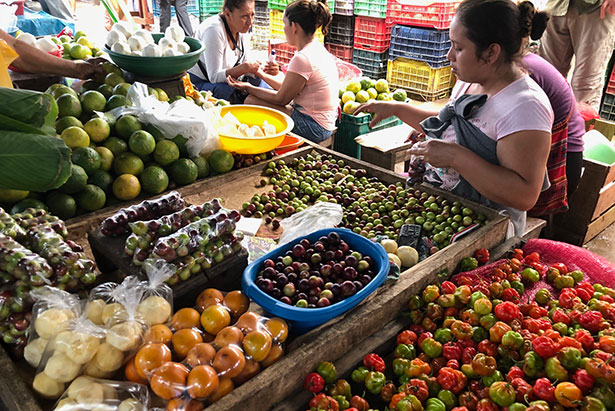Solving the Peruvian Food Paradox

I just returned from a second trip to Peru as part of a visionary gastronomy project called Cumari, a project of Forest Trends and Canopy Bridge that is engaging chefs and entrepreneurs in an unexpected dialogue about environmental protection, fisheries management and Amazonian food and food traditions. Cumari is calling attention to the cornucopia of Amazonian fruits, foods and preparations that offer an opportunity to experience the Amazon in new ways. And it demonstrates how environmentalists, chefs and public health professionals can and should work together to improve the health and well being of the Amazon and the people who live in and along the river. It isn’t just the right thing to do – it’s also a surprisingly delicious way to utilize Amazonian resources responsibly to improve planetary health at the same time.
The Amazon river is essential to the health of the planet (it is the world’s largest tropical rainforest and covers over 5.5 million square kilometers). The river runs through Brazil, Bolivia, Peru, Ecuador, Colombia, Venezuela, Guyana, Suriname and French Guiana flowing a distance of around 6,400km. More than 20% of the world’s oxygen is produced by the rainforest, and it offers an astonishing biodiversity.
Cumari celebrates the unique foods and local traditions of the Amazon basin and is introducing new products to chefs in Peru, in the nine countries that border the Amazon and to a broader community through gastronomy and “alta cuisine.” As a public health professional, I have seen first hand the devastation that can result when the product development process fails to consider the overall health and well being of the communities where they are sourced, as well as the ingredients used to make them. We must avoid pricing essential foods out of the pocketbooks of those who raise them, and we must make sure our work benefits the growers, fishermen and communities with whom we engage. Preserving the Amazon is in the interests of all of us.
Peru is a country of contrasts. Food is culture – and through the sustained efforts of the government, chefs, civil society and global partners, stunting and malnutrition rates have tumbled over the past decade. Improving the health of women and children has been a shared national priority, and this commitment has delivered a sharp drop in rates of malnutrition for much of Peru. The country more than halved its rate of chronic malnutrition among children under five, from nearly 28% to 13% in 2016.
But these successes are not shared by indigenous people or by those who live along the Amazon. It is a Peruvian paradox that the people who live in one of the most bio diverse regions on earth continue to experience chronic malnutrition and stunting at extremely high rates.
Stunting is defined by WHO as the impaired growth and development that children experience from poor nutrition, repeated infection, and inadequate psychosocial stimulation. And children along the Amazon who are stunted before the age of two often experience physical and cognitive disadvantages later in life, such as poor educational attainment, low adult wages, lost productivity and an increased risk of nutrition-related chronic diseases in adult life.
As we develop our programs for Cumari, addressing the nutritional needs of Amazonian mothers and children in our supply chain must be a priority. It will help establish a more sustainable model, where healthy foods sourced in responsible ways will not only protect the local landscape – it will encourage healthy eating habits for those in the region, too.
And that’s a cause worth fighting for.
